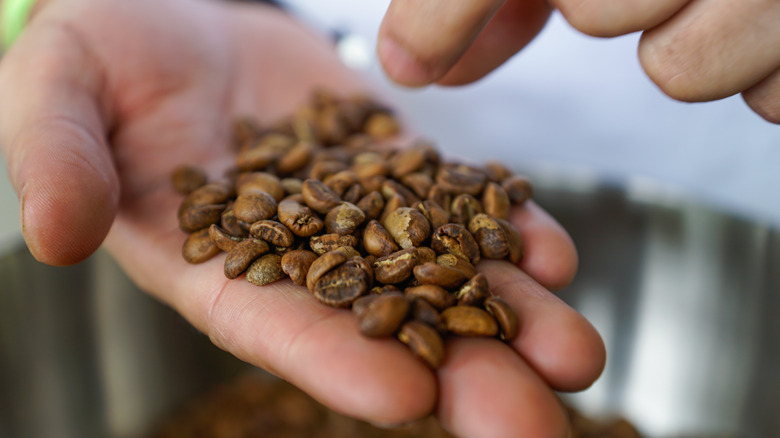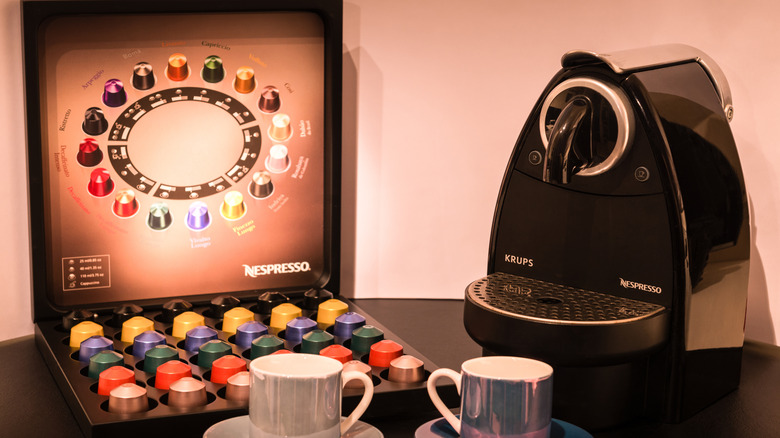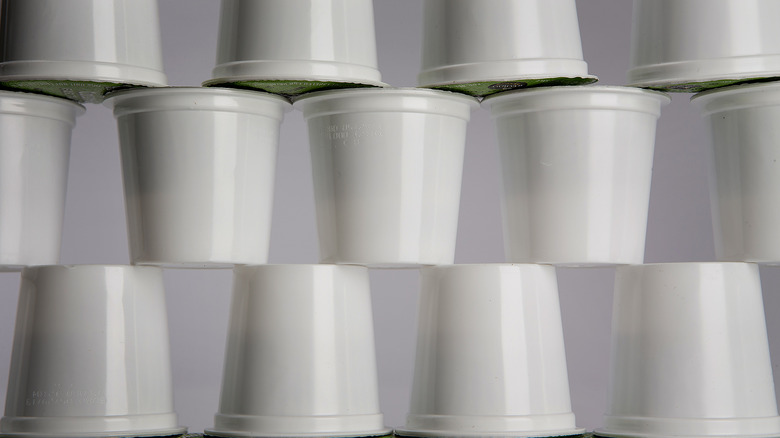Coffee Pods Vs. Beans: What's The Difference?
Here's a pop quiz while you sip your morning beverage. In which country do people consume the most coffee per person per year? According to World Population Review, the answer is Finland where people consume 12 kg (26 lbs) of coffee per year, which translates to about eight cups a day, per Insider, largely thanks to the extreme cold and the extended periods of darkness.
But even if you don't live in the northern regions of the world, coffee is an integral part of people's lives globally and there are numerous ways to brew and drink it, from Dalgona coffee to cappuccino. One of the fairly new innovations in coffee making is the coffee pod (or capsule). Some may have strong views on this since coffee drinking is very personal, but objectively, the differences are in production, convenience, flavor, and environmental impact.
This matters because it determines the type of machine or appliance you use. To use a coffee pod, you need a machine from brands like Lavazza, Nespresso or Keurig. Meanwhile, to use coffee beans you need a bean-to-cup machine from brands like Smeg which typically come with its own bean grinder and milk frother or you can use a coffee grinder and a French press or drip coffee maker.
Coffee pods are more convenient but using coffee beans allows for personalization
Let's start with the production process. Coffee beans are harvested from coffee plants and then carefully sorted, roasted, and left whole or ground to varying sizes depending on the desired brewing method. Because of this, buying coffee beans from a roaster, in particular, means being able to mix and match the beans to get your preferred taste profile, flavor, and aroma.
In comparison, coffee pods are pre-packaged single-serve units containing ground coffee (up to 12g). You cannot adjust the quantity of the coffee, so with this consistency comes a standardized coffee experience. Think of it as the difference between loose-leaf tea (coffee beans) and tea in tea bags (coffee pods).
In terms of convenience, coffee pods have a clear (albeit proprietary) advantage. Simply pop the pod into the machine, press a button, and within seconds, you have a fresh cup of coffee. Just remember that coffee pods are only compatible with specific pod machines. In other words, you cannot use the pods from one brand with the machine from another brand. It's the equivalent of only being able to charge your Apple phone with an Apple phone charger.
Coffee beans have a lower environmental impact and arguably tastes better
When it comes to environmental impact, coffee grounds are biodegradable but coffee pods are a bit more complicated. The single-use nature of pods with their plastic and aluminum generates a significant amount of waste which has environmental repercussions. These days, major brands like Nespresso have made the pods recyclable but you cannot simply chuck it in your home recycling bin. Instead, you have to take it or post it to a dedicated recycling collection center. All these micro steps increase carbon footprint so it is no surprise that the city Hamburg in Germany banned coffee pods in government buildings.
Finally, let's talk about the difference in taste. The conventional wisdom is that coffee beans make for a better cup of coffee. Freshly ground coffee has a strong aroma and taste because the grinding process releases the aromatic oils and enhances the flavor. While coffee pods are tightly sealed to stay as fresh as possible, the pre-ground coffee can go stale from oxidation.
Ultimately these differences come down to personal preferences, priorities, and lifestyle. Coffee pods offer convenience and consistency but coffee beans provide a wider range of flavors and the opportunity for customization, so it is ideal for coffee connoisseurs.


